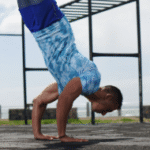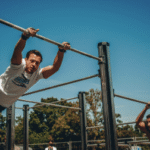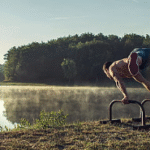The Science of Hot and Cold Therapy
These methods, known technically as thermotherapy (heat) and cryotherapy (cold), leverage the body’s physiological responses to temperature changes for therapeutic benefits, primarily related to pain relief, inflammation management, tissue healing, and muscle recovery.
- Thermotherapy (Heat Therapy)
The application of heat to the body.
Physiological Mechanisms:
Vasodilation: Heat causes blood vessels in the treated area to widen (dilate).
Increased Blood Flow: Vasodilation leads to significantly increased blood circulation to the area. This delivers more oxygen and nutrients needed for tissue repair and promotes the removal of metabolic waste products (like lactic acid).
Increased Tissue Metabolism: Cellular metabolic rate increases slightly with heat, potentially speeding up biochemical reactions involved in healing.
Increased Tissue Extensibility: Heat makes connective tissues (like muscles, tendons, ligaments) more flexible and elastic, reducing stiffness.
Muscle Relaxation: Heat can decrease muscle spindle firing rates and increase Golgi tendon organ firing rates, leading to reduced muscle tone and spasm.
Pain Relief:
Gate Control Theory: Heat stimulation can activate thermoreceptors, potentially blocking the transmission of pain signals to the brain via the spinal cord (closing the “gate” to pain).
Muscle Relaxation: Reducing muscle spasms and stiffness directly alleviates associated pain.
Ischemia Reduction: Increased blood flow can alleviate pain caused by ischemia (lack of blood supply).
Common Applications:
Chronic Pain: Effective for non-inflammatory chronic pain conditions like osteoarthritis, chronic back pain, muscle soreness (DOMS – after the initial 48-72 hours), fibromyalgia.
Muscle Stiffness & Spasms: Relieving tension headaches, neck stiffness, back spasms.
Increasing Range of Motion: Used before stretching exercises or physical activity to improve flexibility and reduce the risk of injury by warming up tissues.
Promoting Relaxation: Warm baths or heating pads can have a general calming effect.
Methods of Application:
Superficial Heat: Hot packs, electric heating pads, warm compresses, hot water bottles, paraffin wax baths, hydrotherapy (warm baths/showers/whirlpools). Affects skin and superficial tissues.
Deep Heat: Therapeutic ultrasound, diathermy. These modalities generate heat in deeper tissues (muscles, joints). Requires professional administration.
Risks and Precautions:
Burns: Applying heat that is too intense, for too long, or directly onto the skin can cause burns. Always use a protective barrier (towel). Limit application time (typically 15-20 minutes).
Increased Inflammation: Should NOT be used on acute injuries (first 24-72 hours) or areas with active inflammation, as increased blood flow can worsen swelling and inflammation.
Contraindications: Avoid over areas with impaired sensation (risk of burns), poor circulation, malignancy (tumors), bleeding disorders, severe infection, or open wounds. Caution in pregnancy over the abdomen/low back.
- Cryotherapy (Cold Therapy)
The application of cold to the body.
Physiological Mechanisms:
Vasoconstriction: Cold causes superficial blood vessels in the treated area to narrow (constrict).
Decreased Blood Flow: Vasoconstriction reduces blood flow to the area, which helps limit swelling (edema) and bleeding/bruising, especially in acute injuries.
Reduced Inflammation: Decreased blood flow limits the arrival of inflammatory mediators to the site of injury.
Decreased Tissue Metabolism: Cold slows down the metabolic rate of cells in the area, reducing their oxygen demand and potentially limiting secondary hypoxic injury (damage to surrounding cells due to lack of oxygen after the initial trauma).
Pain Relief (Analgesia):
Nerve Conduction Velocity: Cold significantly slows down the speed at which nerves transmit signals, including pain signals.
Numbing Effect: Acts as a local anesthetic by decreasing nerve ending sensitivity.
Gate Control Theory: Similar to heat, cold sensation can compete with pain signals.
Reduced Muscle Spasm: Cold can decrease nerve firing and muscle spindle activity, helping to relax spastic muscles.
Common Applications:
Acute Injuries (First 24-72 hours): Sprains, strains, bruises, fractures, dislocations. A key component of the RICE (Rest, Ice, Compression, Elevation) protocol to manage pain, swelling, and inflammation.
Inflammation: Tendinitis, bursitis.
Pain Relief: Acute pain, sometimes chronic pain flares (e.g., gout).
Post-Exercise Recovery: Reducing delayed-onset muscle soreness (DOMS) and perceived fatigue, often via cold water immersion (ice baths). The evidence supports pain reduction, though debate continues on whether it impacts actual muscle repair mechanisms.
Managing Swelling: Post-surgery or after injury.
Methods of Application:
Ice packs (crushed ice often conforms best), frozen gel packs, cold compresses, ice massage (rubbing ice directly over a small area), vapocoolant sprays (temporary, superficial cooling), cold water immersion/ice baths, Whole Body Cryotherapy (WBC) chambers (brief exposure to extremely cold air).
Risks and Precautions:
Frostbite/Ice Burns: Applying cold for too long (typically over 15-20 minutes per session) or directly onto the skin without a barrier can damage skin and underlying tissues.
Nerve Damage: Prolonged or excessive cold can cause temporary or, rarely, permanent nerve damage (neuropraxia).
Rebound Effect: Some argue prolonged application can lead to reactive vasodilation after removal, potentially increasing swelling later (though usually vasoconstriction dominates during application).
Contraindications: Avoid over areas with impaired sensation, poor circulation (e.g., peripheral vascular disease), Raynaud’s disease, cold urticaria (cold allergy), open wounds, or certain cardiovascular conditions (especially for ice baths/WBC).
III. Contrast Therapy
Alternating between hot and cold therapy.
Mechanism: The theory is that rapidly alternating between vasodilation (heat) and vasoconstriction (cold) creates a “pumping” action in the blood vessels and lymphatic system. This is thought to help “flush out” metabolic waste products and reduce edema more effectively than heat or cold alone.
Application: Often used in sports medicine for recovery from exercise or injury (after the acute phase). Typically involves cycles like 3-4 minutes of heat followed by 1 minute of cold, repeated several times.
Evidence: While popular, high-quality scientific evidence supporting a significant physiological “pumping” action or superior benefits over active recovery or cold alone is still debated and evolving. It may primarily offer benefits through pain modulation and placebo effects.
- Key Considerations & Scientific Basis Summary
Timing is Crucial: Generally, COLD is for ACUTE inflammation, swelling, and pain (first ~48-72 hours). HEAT is for CHRONIC stiffness, muscle soreness (after the acute phase), and increasing flexibility.
Application Matters: Use appropriate methods, limit duration (typically 15-20 minutes per session, repeated as needed with breaks), and always use a protective barrier (like a towel) between the pack/pad and the skin to prevent burns or frostbite.
Evidence Level: The use of superficial heat and cold for localized pain management and reducing acute inflammation/swelling is well-established and based on clear physiological principles. The evidence for effects on DOMS (especially cold water immersion) is moderate but complex. Evidence for systemic benefits of methods like Whole Body Cryotherapy is still emerging and requires more rigorous research.
Consult Professionals: For significant injuries, chronic conditions, or uncertainty about appropriate use, consult a doctor, physical therapist, or other qualified healthcare professional.
Conclusion:
Hot and cold therapies are accessible and effective tools that utilize the body’s natural responses to temperature to manage pain, control inflammation and swelling, relax muscles, and aid in recovery. Understanding the underlying science – how heat causes vasodilation and relaxation versus how cold causes vasoconstriction and reduces inflammation/nerve conduction – allows for their safe and targeted application to achieve specific therapeutic goals. Proper timing, duration, and safety precautions are essential for maximizing benefits and minimizing risks.

The Science of Hot and Cold Therapy
Route
Calisthenics Gym Houston Functional Bodyweight Training
Secondary phone: (346) 483-3195
Email: info@calisthenicsclubhouston.com
URL: https://calisthenicsclubhouston.com/
Monday 6:00 AM - 7:00 PM Tuesday 6:00 AM - 7:00 PM Wednesday 6:00 AM - 7:00 PM Thursday 6:00 AM - 7:00 PM Friday 12:00 PM - 6:30 PM Saturday 9:45 AM - 12:00 PM Sunday 3:00 PM - 5:00 PM





